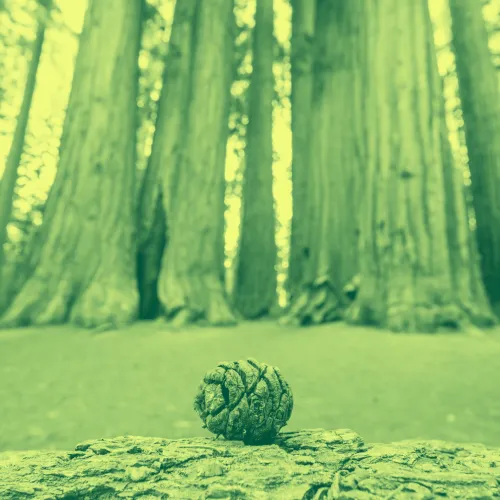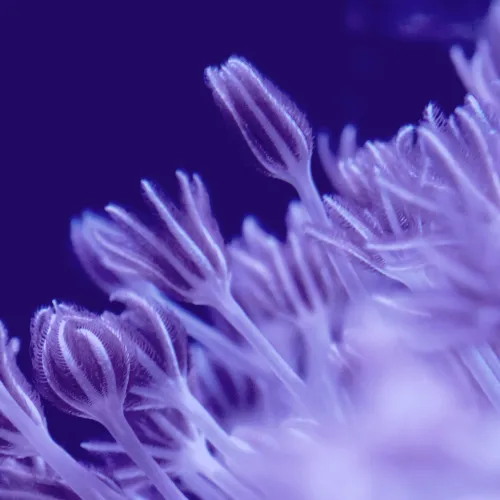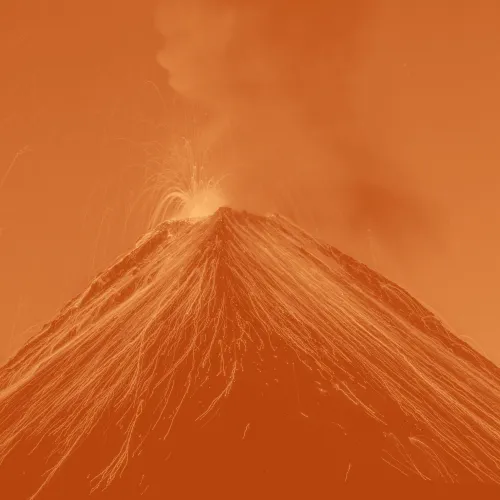By the Numbers

Get To Know Carnegie Science
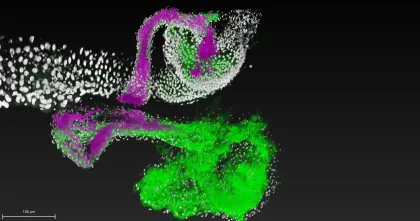
Andrew Carnegie founded this institution in 1902 as a home for world-transforming scientific discoveries. Today, Carnegie Science’s mission—to advance investigation, research, and discovery, and apply that knowledge to the improvement of humankind—is more urgent than ever. An independent research organization, we provide our scientists with the flexibility to follow their curiosity, seize opportunities as they arise, and define new fields of investigation.
From genomes to ecosystems and from planets to the cosmos, Carnegie Science is an incubator for cutting-edge, interdisciplinary research that is expanding our knowledge of all that is around us. On a scale encompassing the entire natural world, and at the nexus of a broad array of disciplines, our investigators are tackling the biggest questions of our time:
-

- How did life emerge on our planet and can it be discovered elsewhere?
- How do we combat the devastation of climate change and promote sustainability?
Carnegie's unique structure elevates collaboration and collegiality, encourages scientists to think across disciplines and pursue high-risk lines of inquiry that have the potential to yield exceptional results. Discoveries made here will enhance our understanding of the universe and increase biodiversity, reduce extinction, and improve quality of life—all because brilliant minds have the time, intellectual freedom, and unmatched resources to forge new paths of study.
Impact Statistics
-
0
Principal Investigators
Our scientists are leaders across diverse fields of expertise.
-
0
Publications
Our high-impact research appears in top-tier journals.
-
0
Citations
Our scientists have an outsized impact on the global research enterprise.
Seed funding promotes bold research
Launched in 2015, the Carnegie Science Venture Grants program was designed to provide seed funding for high-risk, enterprising research projects that eliminate silos and break disciplinary boundaries. Since its inception, 24 grants have been awarded, launching several exciting initiatives. Past successes include unraveling a long-standing mystery about how genetic material is organized in a diverse group of algae called dinoflagellates and the development of a framework for understanding the interiors, and potential habitability, of super-Earths.
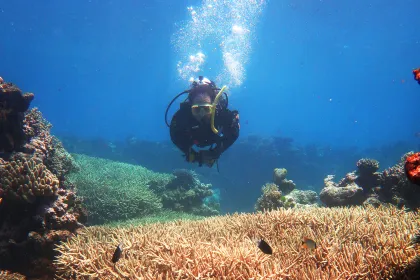
“I am very proud of our scientists’ audacious and creative ideas that have been enabled by venture grants,” said Carnegie Science President John Mulchaey. “These grants give our staff opportunities to explore exciting new directions and push at the boundaries of their science.”
Most recently, a grant was awarded to Adrien Burlacot, a plant biologist with expertise in photosynthesis, and Lorenzo Rosa, an environmental engineer with expertise in global agricultural modeling. They will measure how light affects the nano-scale temperature inside plant cells during photosynthesis, including the impact of changing light conditions on this process. They will then use machine learning and statistical regressions to translate these results from the molecular scale to the global scale, quantifying how heat and light stress will impact agricultural productivity under future climate scenarios.
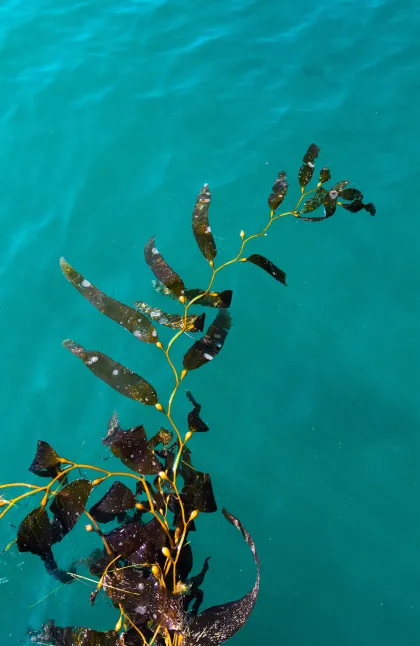
A year earlier, Carnegie biologists Phillip Cleves and Yixian Zheng partnered with Jianhua Wang, who oversees the Earth and Planets Laboratory’s nanoscale secondary ion mass spectroscopy facility to probe 120 coral genes that could be involved in enabling coral polyps to obtain nutrients from their symbiotic algae. This relationship is fundamental to coral health but is threatened by ocean warming due to climate change. Using this sophisticated equipment, the researchers are working to reveal the molecular processes by which algae supplies food to the coral and how this important function may be lost during bleaching events.
Cleves has been awarded several Venture Grants for his marine biology research, including a project in collaboration with plant scientists Arthur Grossman and Frej Tulin that is improving our knowledge of kelp reproductive biology. By better understanding the mechanism by which kelp generates and releases spores into the environment, scientists can improve our ability to develop kelp as an aquaculture crop, as well as inform rewilding conservation efforts.
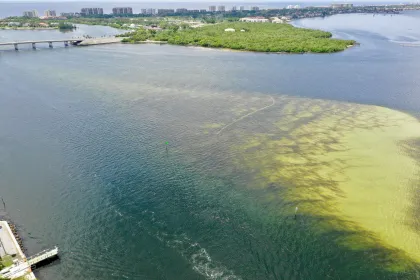
“Every year, our staff and postdocs put forward interdisciplinary approaches to address big scientific questions and solve research challenges,” Mulchaey added.
The interdisciplinary focus of the program enables people to tap into the expertise of Carnegie Science colleagues to answer long-standing questions. For example, plant biologist David Ehrhardt partnered with astrobiologist Andrew Steele to understand how plants form and maintain “molecular memories.” Ecologist Anna Michalak, recently departed evolutionary geneticist Moises Exposito-Alonso, and microbiome specialist William Ludington received funds to conduct a first-of-its-kind study to understand how climate change and evolutionary pressures are driving genetic changes in the phytoplankton species that form dangerous algal blooms.
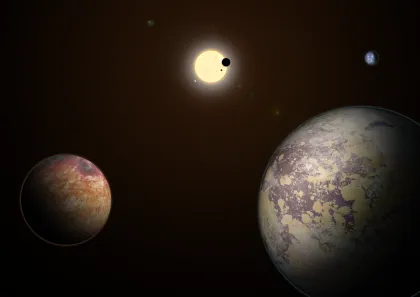
Other Venture Grant efforts cross geographic, rather than disciplinary, boundaries to bring together experts in similar fields who work at different Carnegie Science campuses—or experts from partner organizations—to push the boundaries of their research. For example, Earth and Planets Laboratory theorist Peter Gao and Observatories theorist Tony Piro are working together to develop a method for discovering exomoons using evidence of lunar volcanism.
“Our Venture Grant allowed us to launch a new program to study the internal structure of super-Earths using state-of-the-art facilities at the National Laboratory, leading to high-impact publications on melting and density at extreme pressure,” said Earth and Planets Laboratory Staff Scientist Yingwei Fei. “Through the program we have established close collaborations with scientists at the National Laboratories and continue projects focusing on materials properties under extreme conditions.”
The Carnegie Science Venture Grant program is generously supported by The Ambrose Monell Foundation. We are grateful for their long-time investment in our research.
Celebrated Scientists
-
0
Laureates
There are four former Carnegie Science researchers who have been awareded the Nobel Prize in Phyisiology or Medicine.
-
0
Recipients
Carnegie Science has 10 National Medal of Science winners in its history.
-
0
Members
Our institution has 10 living members of the National Academy of Sciences.
Sharing Our Science
Carnegie Science’s Capital Science Evening lecture series brings together leading scientists, researchers, and innovators to share their groundbreaking discoveries and insights with the public. These events provide a unique platform for exploring the most pressing scientific questions of our time, from the mysteries of the cosmos to the complexities of climate change, neuroscience, and more. Capital Science Evenings aim to inspire curiosity, spark innovation, and promote a deeper understanding of the natural world and the challenges we face by fostering a dialogue between experts and our audiences. Our 2022-2023 Season brought together a diverse array of high-profile scientists who shared their cutting-edge research and visionary insights, creating a vibrant narrative of discovery across multiple scientific fields.
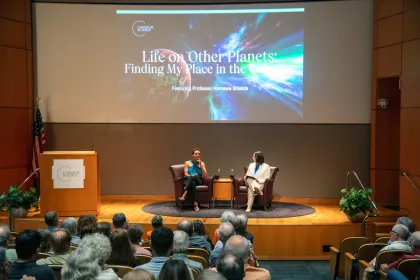
The season began with an exploration of the brain's mysteries with Kavli Prize Laureate Cori Bargmann. In her lecture, "One Brain, Many Behaviors: The Fascinating World of Circuit Neuroscience," Bargmann invited the audience into the complex world of neural circuits, revealing how these intricate networks give rise to a vast array of behaviors. Her discussion on the latest research in circuit neuroscience provided a deeper understanding of how the brain functions and offered new perspectives on mental health and neurological disorders.
Next, Lee R. Berger, a paleoanthropologist and National Geographic Explorer-in-Residence, took the audience on a thrilling journey into the past with his talk, "The Future of Exploration in the Greatest Age of Exploration." Berger, known for his groundbreaking discoveries of new hominin species, shared his vision for the future of exploration, driven by technological innovations that are opening up previously inaccessible regions of the world. His narrative underscored the idea that we are living in a new golden age of discovery, where the boundaries of human knowledge are expanding at an unprecedented rate.
The narrative then took a turn towards the microscopic with Margaret McFall-Ngai, a biologist at Carnegie Science. In her lecture, "Squid Pro Quo: Insights from a Hawaiian Denizen about Living with Our Microbial Partners," McFall-Ngai shared the fascinating story of the Hawaiian bobtail squid, a creature whose symbiotic relationship with microbes offers profound insights into the broader implications of symbiosis in biology. Her exploration of this unique partnership shed light on the essential roles that microbes play in animal health and opened up new avenues of understanding in the study of life's complexity.
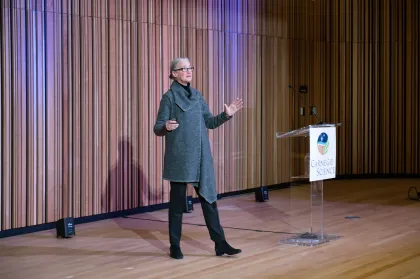
Shifting from the complexities of life to those of our planet Earth, J. Marshall Shepherd, a climate expert and distinguished professor at the University of Georgia, took the stage with his presentation, "Cloudy with a Chance of Science." Shepherd delved into the intricate science of weather and climate, demystifying the challenges of predicting extreme weather events. His talk highlighted the vital role that climate science plays in shaping public policy and preparing for the impacts of climate change, emphasizing the need for informed action in an era of increasingly volatile weather patterns.
Through these lectures and discussions, the Carnegie Science events of 2022-2023 season wove together a rich tapestry of scientific exploration, from the smallest microbes to the farthest reaches of space, offering a glimpse into the future of discovery and the endless possibilities that lie ahead.
Did You Know?
-
0
Members
More than third of Carnegie Science’s Principal Investigators, across disciplines as varied as aquatic ecology, climate science, volcanology, and astronomy have joined the institution's Climate and Resilience Hub.
-
0
Projects
Over three cycles of telescope-time allocation, more than a dozen investigations headed up by Carnegie-affiliated astronomers have been selected to use JWST to study objects ranging from exoplanet atmospheres to the earliest generations of stars and galaxies.
-
0
Billion Years
The age of the asteroid Bennu. Carnegie Science researchers played a critical role in the analysis of the material returned to Earth from this space rock in October 2023.
Keep Reading
Carnegie Science’s legacy is one of bold questions and transformative discoveries. Together, we continue to explore the unknown and unlock the secrets that shape our world—and beyond.
Your investment in Carnegie Science fuels bold exploration.
Carnegie Science’s bold, boundless, and wondrous approach to discovery.
Our scientist's recent achievements and the newest members of our team.
We're tackling the challenges of climate change and sustainability through cross-disciplinary collaboration.
